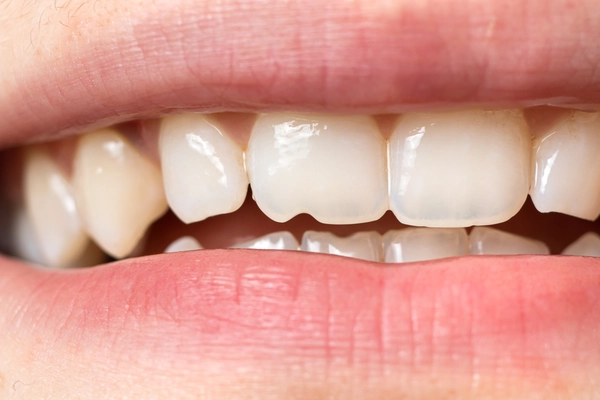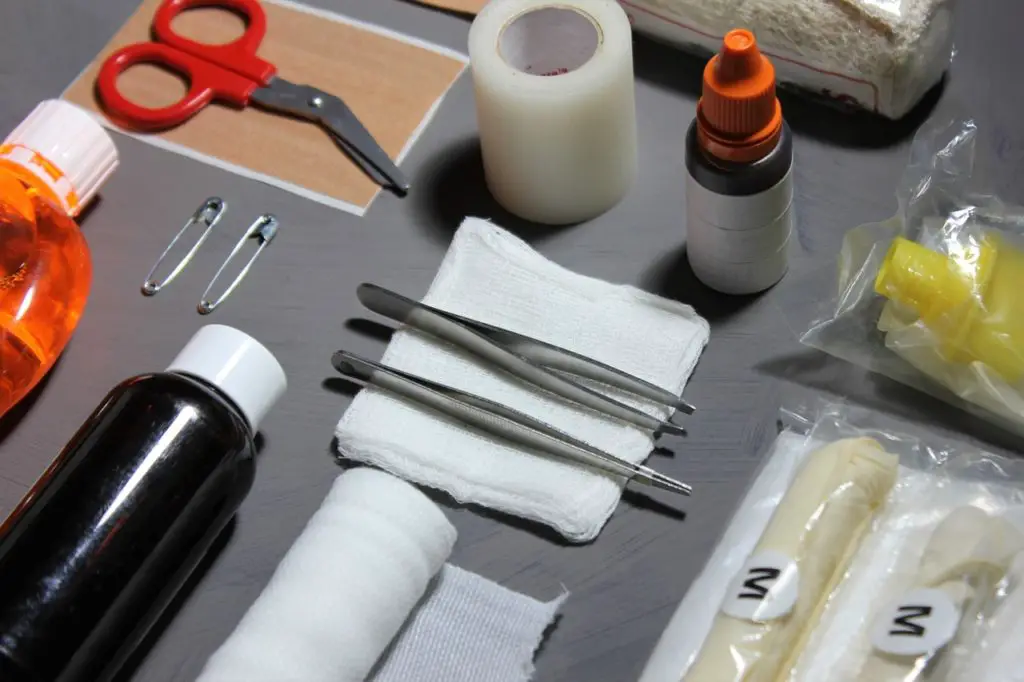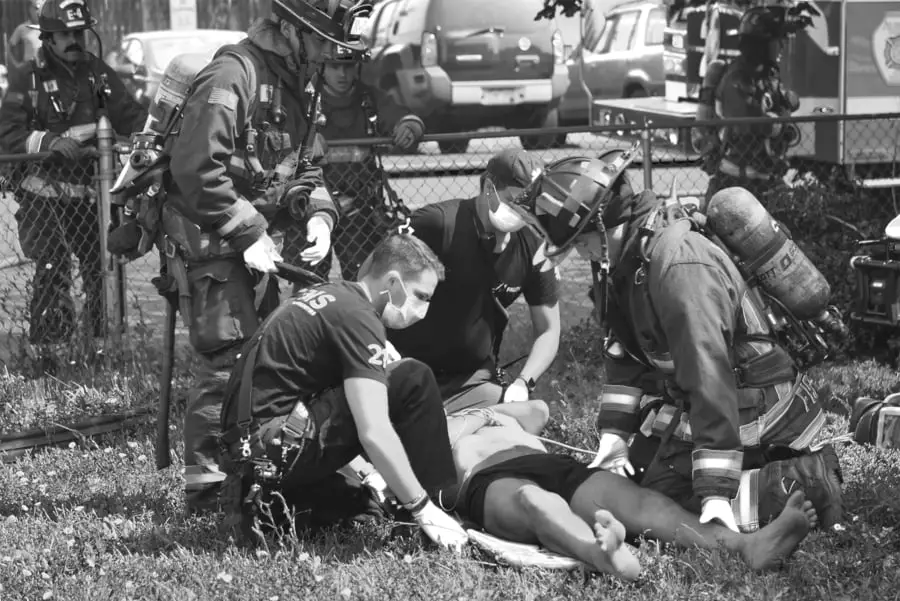I’ve managed to chip my tooth twice. The first was during my time in the Army. I somehow managed to bounce my tooth off of the buttstock of my rifle while jumping to the ground in a field exercise. That fix was covered by Uncle Sam and came out great. The second was during a New Year’s celebration where it was freezing cold and we were outside. I accidentally hit my tooth with a bottle and I think, due to the cold, chipped a tiny piece off. So small that my dentist said it wasn’t worth fixing unless I really wanted to and that it gave me “character”.
What’s amazing is that tooth enamel is the hardest substance in the human body. It is even stronger than bones! But it’s not uncommon to experience chipping or breakage while biting into hard food or during sporting events due to falls or other accidents.
These scenarios might require dental attention ASAP as they can lead to pain, infection, discomfort, or a roughened edge of a chipped tooth which might injure the tongue or cheek.
The following article will help you understand what should be done when you chip or break a tooth, and when you should see a dentist.
What to do for a chipped or broken tooth at home
A chipped or broken tooth might not seem like a big deal, but it can lead to big problems. First ma
Do’s
- If it is just a small chip, search for the chipped off tooth portion if possible and take it to the dentist. Ensure that the chip isn’t still in the mouth!
- Clean your mouth by using lukewarm saltwater. To create a proper salt water mouth rinse, boil the water for 10 minutes and add 1 teaspoon of salt per 8 ounces of water and 2 teaspoons of baking soda (optional).
- Check for any cuts or bleeding from the tongue and cheek. If it’s seriously bleeding, keep the pressure on the area with the help of cotton or gauze.
- Check for a sharp edge. If so, cover it with dental wax (available in drug stores as paraffin wax) or sugarless chewing gum or even gauze.
Don’ts
- Do not try to stick the tooth pieces together with adhesive of any sort.
- Do not grind the sharp edges of the tooth by using sandpaper or any other files.
Can you use Dentek on a broken or chipped tooth?
Dentek Temparin Max is not advisable for breakage and chipping of the teeth. It is a temporary repair material to be used in areas of dislodged fillings or caps.
● It is a temporary material that is used to close the cavity caused by a dislodged filling or to stabilize a loosened cap.
● It is advised for only people who cannot visit a dentist immediately (during travel or in remote places).
● These types of scenarios need to be attended to by the dentist within a day or two even after using the kit.
● Even though it can last for more than a day it is not advisable as it is just a temporary material that can dissolve over time resulting in dislodgement, discomfort, pain, and even infection.
● Choking and swallowing of the cap may also result when it is kept unattended for a long time as the temporary material cannot withstand normal biting pressure.
● Do not bite or chew hardly over the cap or filling stabilized using such temporary materials.
There are several kits available in drug stores or online for chipped and broken teeth. These do not address more important underlying things like infection control and pain management.
Trying to use these temporary kits as a permanent solution can lead to:
● Bacterial growth
● Gum infections
● Bone loss
● Tooth loss
● Other complications resulting in more expensive treatment with repeated appointments and long sitting hours on dental chairs.
No home remedies or Do It Yourself measures can replace professional dental treatment and oral care.
If you want to find out more about what products are recommended to be used, see this article: Dental Wax, Dentek & Dentemp: DIY Dental Repair Options
What to do when a tooth falls completely out at home
Do’s
- If the entire tooth falls out with the root of the tooth, place it in a Save-a-Tooth solution if present in a first aid kit, or place it in milk (preferably low fat and slightly colder than room temperature milk).
- If the above mentioned are not available they can be even placed below the tongue or cheek given the person is conscious and won’t swallow it.
- Clean your mouth with lukewarm saltwater as recommended previously.
- Check for any cuts or bleeding from the tongue and cheek. Keep pressure on them if bleeding using cotton or gauze.
Don’ts
- Do not try to put the tooth back into the socket with any adhesive.
- Do not keep the tooth in water as it might affect the ability to work with the tooth.
- Don’t delay getting dental care. Getting to a proffessional in time and following the proper precautions will help the dentist to re-insert and save the tooth.
What are the most common professional treatment options for chipping of teeth
Treatment remedies might differ based upon the tooth condition, sensitivity, pain, and several other factors. Here are some options:
Cosmetic Contouring: This is the polishing of a tooth surface to make the surface smooth from rough or sharp edges.
● This is the treatment when there is very small or minor tooth chipping with roughened edges.
● This procedure will be completed in a single appointment.
● Simple procedure and not expensive.
Simple Reattachment: A broken tooth fragment can be reattached using bonding materials in between the fragment and the remainder of the tooth.
● It is done when there is a noticeable loss of tooth structure and when a broken fragment is brought to the clinic by a patient.
● This procedure will be completed in a single appointment.
● It’s a simple procedure and not expensive.
Dental Bonding or Filling: The dentist will use a tooth-colored composite resin material to match the shape of the tooth before breakage or chipping. It is then bonded to the tooth.
● It is done for the front tooth with an obvious loss of structure from the original tooth.
● This can also be completed in a single appointment.
● This is more expensive than previous procedures.
Dental Veneers: These are similar to the dental caps but cover only the front surfaces of the tooth.
● These are advised when it’s not possible for bonding the tooth, or when multiple teeth are involved.
● This procedure can take multiple appointments but is more aesthetic than bonding. It can be expensive.
Dental Caps or Crowns: They cover all surfaces of the tooth and can replace the previous shape of the tooth which was lost due to breakage.
● These are used most frequently after root canals or repeated dislodgement of previous fillings.
● This procedure can take multiple appointments and can be expensive.
Measures you can take to prevent chipping or breaking a tooth
Most of the time, teeth are chipped are broken in completely unavoidable ways, like unknowingly biting something hard or accidentally hitting a tooth with a beer bottle. But there are some measures you can take to avoid damaging your teeth.
Do’s
- Use bite guards during physical sports or events where falls can occur.
- If you grind your teeth, tell your dentist.
- Break habits of chewing non-edible objects (like pens or pen caps) which can weaken your teeth over time.
- Hard food can be chewed in the back of the mouth as these teeth can grind the food better without breakage.
Don’ts
- Do not try to open cans, bottles or wrappers with teeth.
- Don’t chew hard candy, ice, and similiar foods.
- Most chippings involve only sensitivity to cold, hot and other similar stimuli. Pain medication isn’t recommended for tooth sensitivity.
- Don’t rely on non-professional opinions and DIY kits as they are temporary and do not focus on infection control or pain management.
- Don’t pretend to be a dentist, professional help will prevent future complications.
When it is an EMERGENCY!?
- Falling out the entire tooth or tooth with a part of the root.
- Tooth structure loss with bleeding from the tooth pulp.
- Tooth structure loss with roughened edge and bleeding in adjoining cheek or tongue.
- Tooth structure loss with severe pain and discomfort.
When there is intense pain, bleeding, and/or loss of the majority of tooth structure, this is considered an emergency.
Have you lost, broken, or chipped a tooth? What did you do? Let me know below in the comments.




